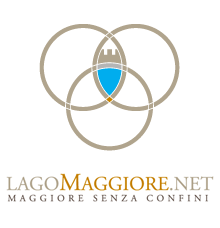
- MUSEUMS
Luino
The city of Luino is located in the spacious plain at the end of Valtravaglia and is the most important city on the Lombard shore of Lake Maggiore. It resembles a typical, elegant lakeside town with the privilege of having an almost Mediterranean habitat. It’s a vital industrial, commercial and tourist centre and now almost forms a single town with nearby Germignaga. Railway traffic from Milan towards the Swiss border passes through here; the grand International Train Station is worth a visit.
The history and culture of Luino
The city also stands out for its old history, but being in contact with different cultures has always left it with an independent and libertarian mark, which was sublimed in Garibaldi’s initiative against the Austrians on 15 August 1848, and in the proletarian revolt for bread on 10 May 1898, the only one in the entire Varese area.
Lively history and culture with a certain inclination for literature have always characterised Luino. Just in the 20th century alone, poet Vittorio Sereni and author Piero Chiara were born in Luino. Dario Fo also lived here; he made his stage debut at the Teatro Sociale (Social Theatre) at the beginning of an artistic career that would win him the Nobel Prize in Literature in 1997. Even Ernest Hemingway mentions Luino in his famous A Farewell to Arms.
Visiting Luino
The first thing to do in Luino is to stroll down the grandiose lakeside promenade, dotted by gigantic plane trees and the harmonious architecture of the buildings delimiting the old Napoleonic harbour. The view from here is over an immense body of water. During this walk, one can admire: the Church of Madonna del Carmine (15th century), the private chapel of the House of Serbelloni (18th century) and adjacent palace, and Palazzo Verbania, which is home to the library and Civic Museum of Archaeology and Palaeontology. A stroll through the historic centre is also pretty, with its ascending streets, Renaissance and Baroque palaces, loggias on the inner courtyards, crafts shops and stores.
Events: Luino street market
One of the city’s main attractions and events is the Wednesday street market. It’s a true weekly fair with over 350 stalls arranged along the streets in the town centre and along the lakeside, where visitors arrive in coaches from everywhere - including Switzerland and Germany. It’s a cosmopolitan, picturesque, coloured folkloristic performance which has been replicated every week since 1541, thanks to permission by Charles V. Luino Markt is the most important street market on Lake Maggiore, although the Sunday appointment with the street market in Cannobio on the opposite shore of the lake is also worth mentioning.



